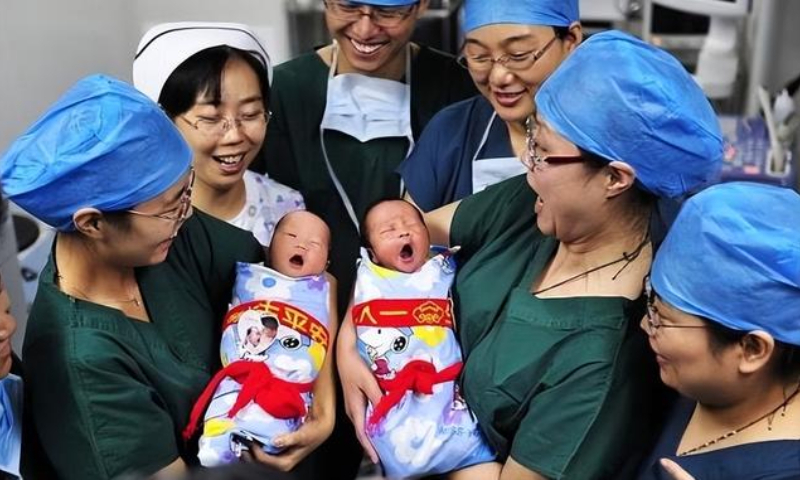
Photo:CFP
After 17 national departments jointly issued a guideline this week to boost population growth, China's State Council, in another major move, on Friday approved plans to establish a joint meeting mechanism that involves 26 departments, aiming to further strengthen coordination in optimizing birth policy amid a declining birth rate.
The State Council inter-ministerial joint meeting mechanism on optimizing birth policy was made public on Friday. It involves 26 departments including the National Health Commission (NHC), Foreign Ministry, National Development and Reform Commission, Ministry of Education, and Ministry of Science and Technology, with the NHC as the leading unit.
The main function of the mechanism is to implement the major policies of the central government in optimizing birth policy, coordinate the national birth policy, research and implement the measures, and guide and supervise the implementation of related policies and measures.
All the involved departments have to actively study issues relating to birth policy and come up with support measures or propose policy recommendations.
Chinese observers on demography said that the establishment of the mechanism, another major move within a week on birth policy, showed that the country has attached growing importance to population development, as the number of newborns in the Chinese mainland has dropped for five consecutive years.
With the participation of almost all the major Chinese departments, China is making actual efforts aiming to create a fertility-friendly society and slow the decline of the birth rate.
Liu Zhijun, deputy director of the Social Science Experiment Center of Zhejiang University, told the Global Times on Friday that the guideline released by 17 departments earlier this week included lots of measures that require the coordination of different departments, and he believes a joint mechanism would better help implement the actual support measures.
Detailed support policies listed in the guideline include promoting prenatal and postnatal care, further developing nursing systems, improving the mechanism for maternity leave and insurance, offering preferential house-purchase policies to families with more than one child, adding high-quality education resources, creating a fertility-friendly employment environment, and setting up a complete service system on population.
The recent moves were taken as China is experiencing a shrinking of the newborn population and a fast-aging society.
Birth data for 2021 released by 29 provinces and regions so far showed that the number of new births in 2021 was
the lowest in decades in several provinces.The continued low fertility rate is out of the expectations of many demographers, as some apparently overestimated the effect of the two-child policy in averting the shrinking newborn population, Liu said.
Liu warned that the trend of a declining birth rate in China cannot be reversed, and the negative population growth will be the dominant trend in the coming years, which may pose great challenges to China's economy and create more social problems if no proper and strong measures are introduced.
The growth rate of China's total population has slowed significantly and is expected to enter a negative increase during the 14th Five-Year Plan period (2021-25), Yang Wenzhuang, head of population and family affairs at the NHC, said in July.
The joint meeting mechanism that involved departments such as the Ministry of Science and Technology could research the possible influence and responses to future aggravation of the aging population as well as the work force shortage, such as developing advanced technologies to displace human labor in some fields, Liu said.




